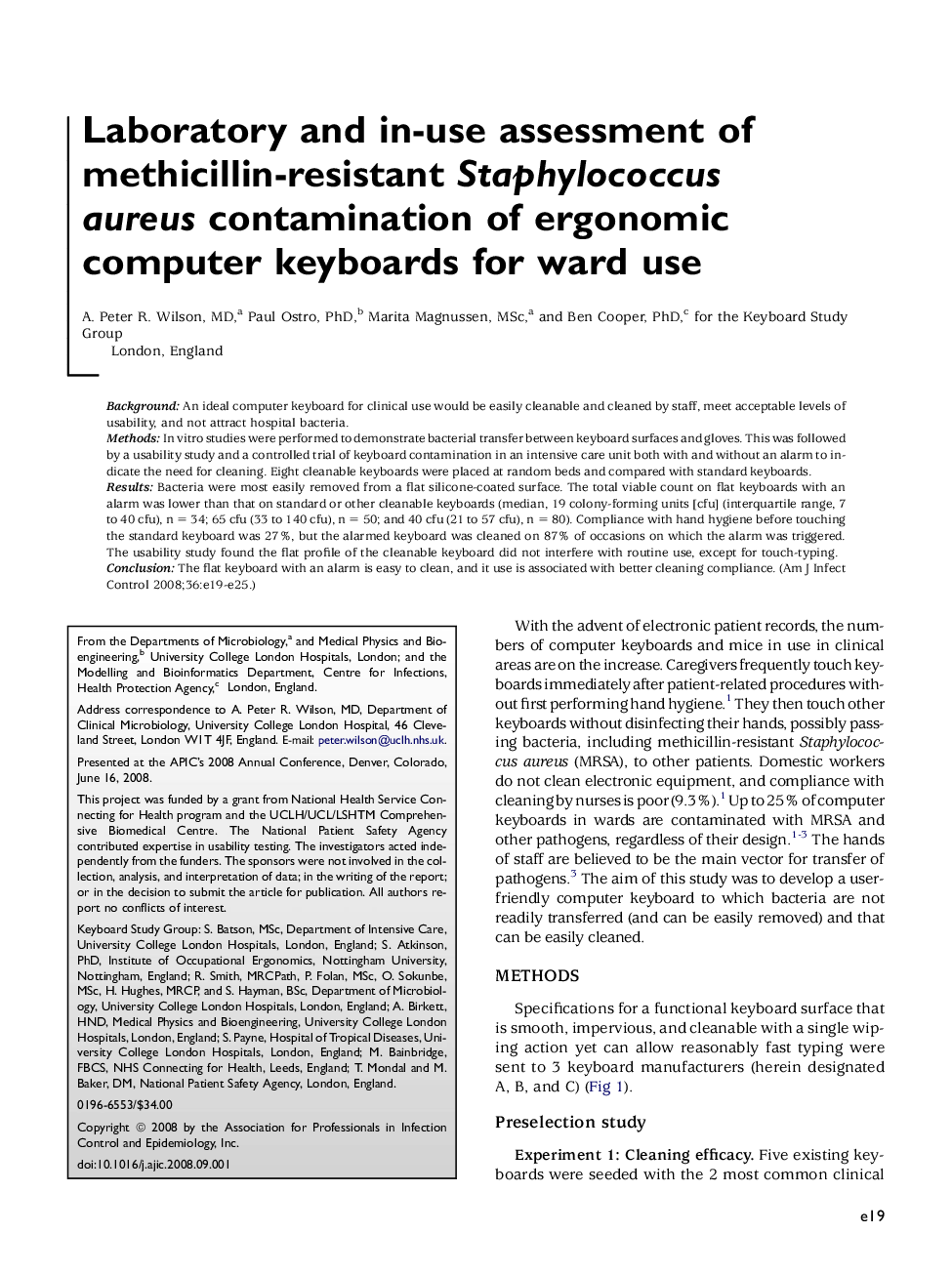| Article ID | Journal | Published Year | Pages | File Type |
|---|---|---|---|---|
| 2638833 | American Journal of Infection Control | 2008 | 7 Pages |
BackgroundAn ideal computer keyboard for clinical use would be easily cleanable and cleaned by staff, meet acceptable levels of usability, and not attract hospital bacteria.MethodsIn vitro studies were performed to demonstrate bacterial transfer between keyboard surfaces and gloves. This was followed by a usability study and a controlled trial of keyboard contamination in an intensive care unit both with and without an alarm to indicate the need for cleaning. Eight cleanable keyboards were placed at random beds and compared with standard keyboards.ResultsBacteria were most easily removed from a flat silicone-coated surface. The total viable count on flat keyboards with an alarm was lower than that on standard or other cleanable keyboards (median, 19 colony-forming units [cfu] (interquartile range, 7 to 40 cfu), n = 34; 65 cfu (33 to 140 cfu), n = 50; and 40 cfu (21 to 57 cfu), n = 80). Compliance with hand hygiene before touching the standard keyboard was 27%, but the alarmed keyboard was cleaned on 87% of occasions on which the alarm was triggered. The usability study found the flat profile of the cleanable keyboard did not interfere with routine use, except for touch-typing.ConclusionThe flat keyboard with an alarm is easy to clean, and it use is associated with better cleaning compliance.
